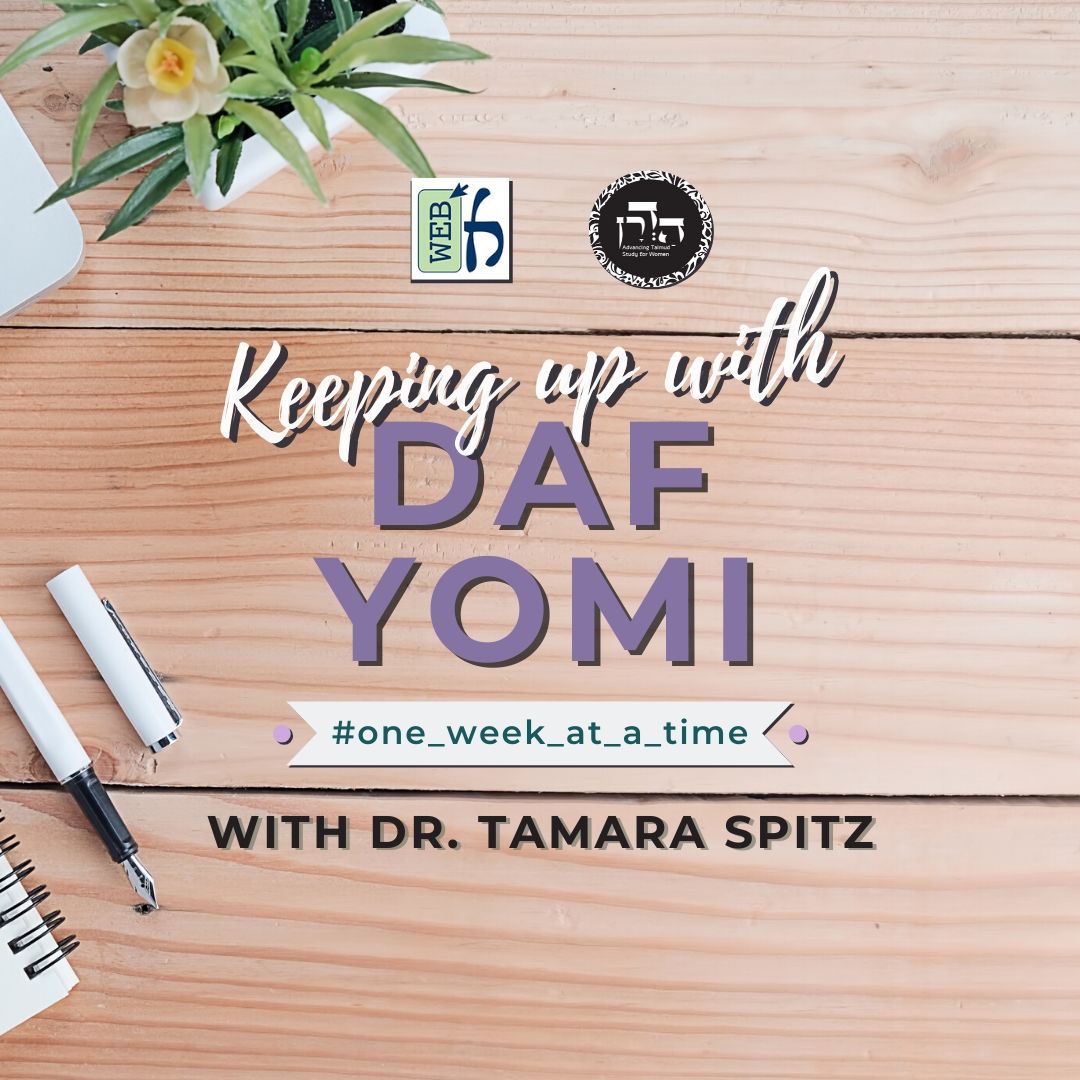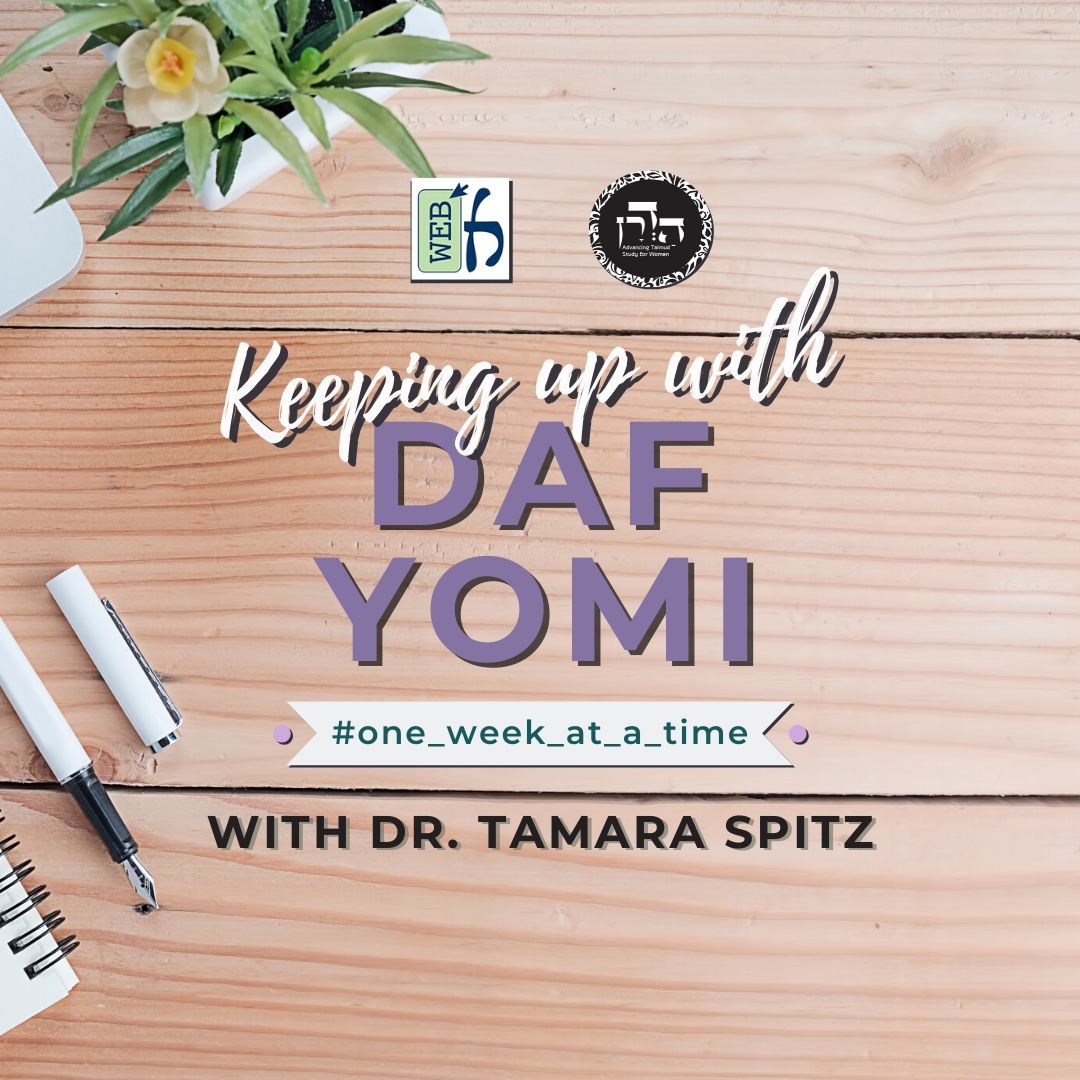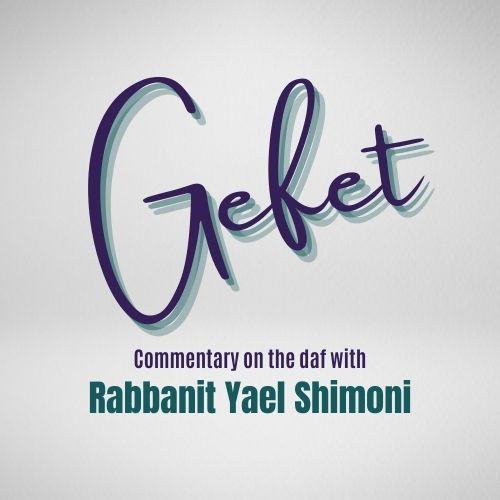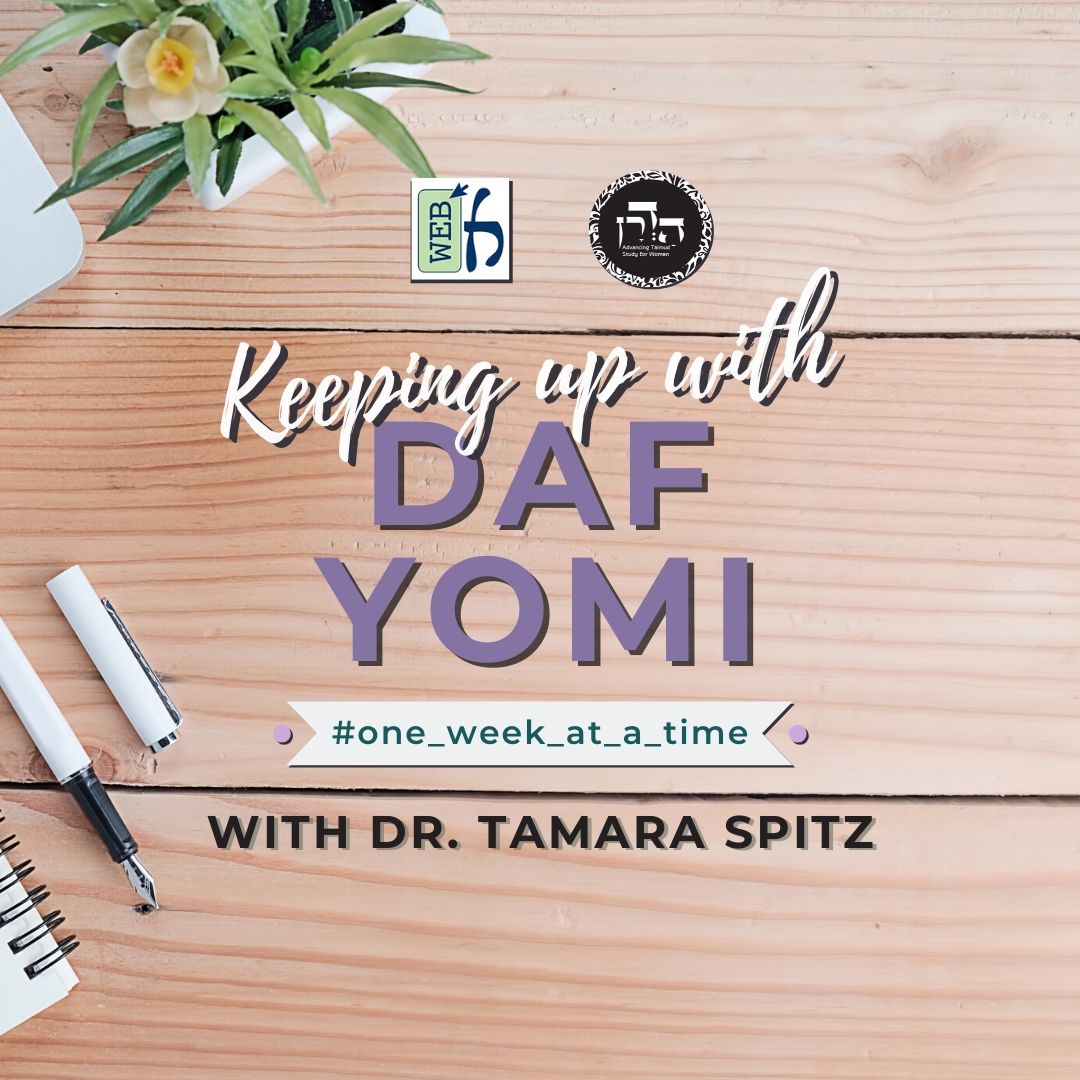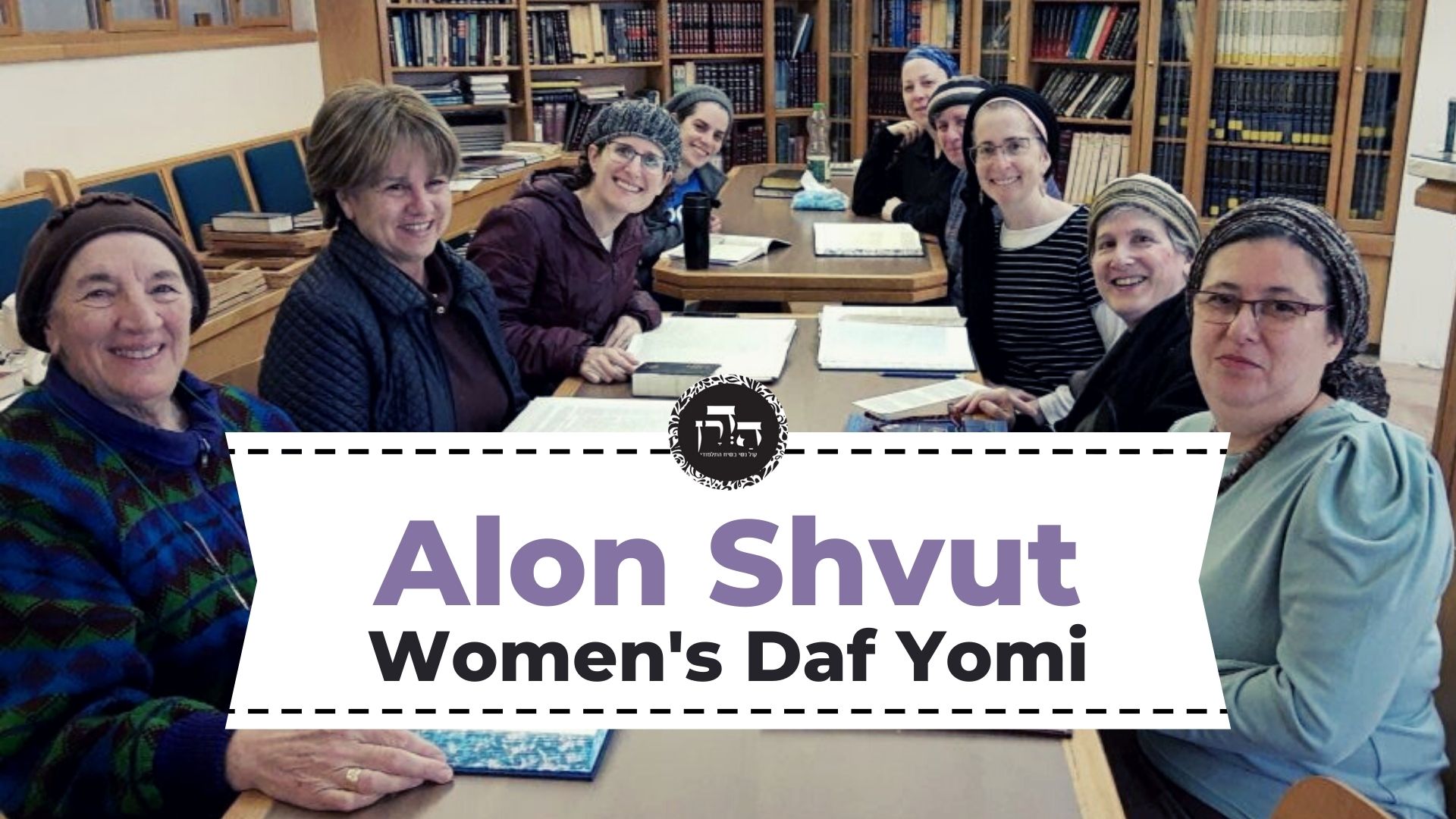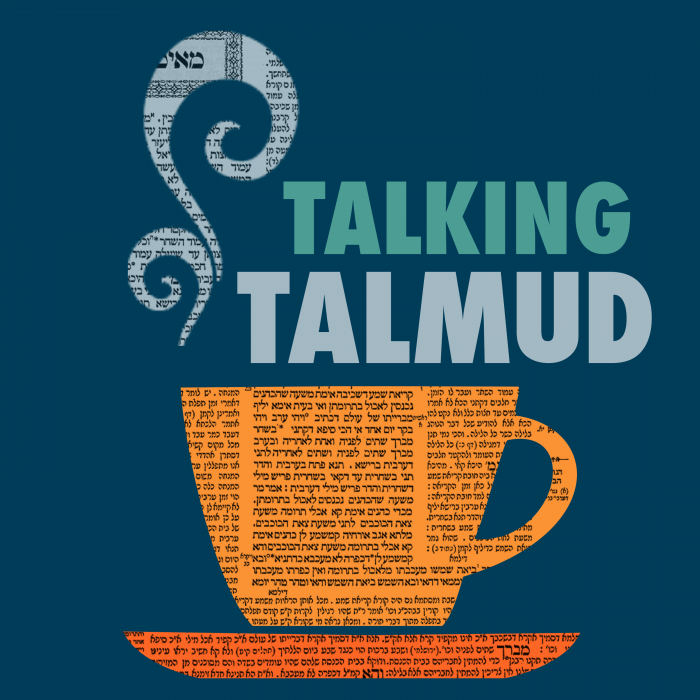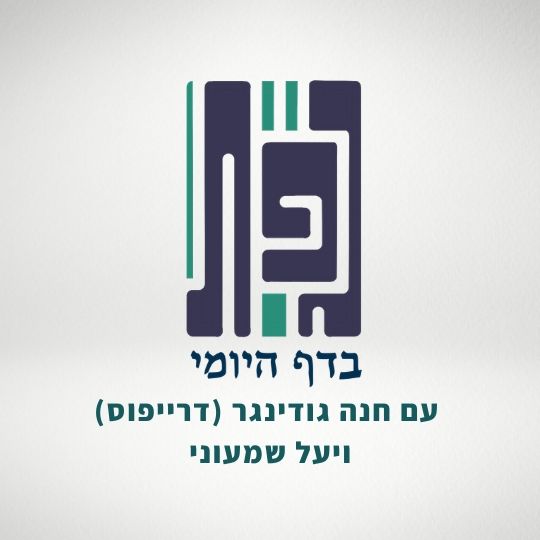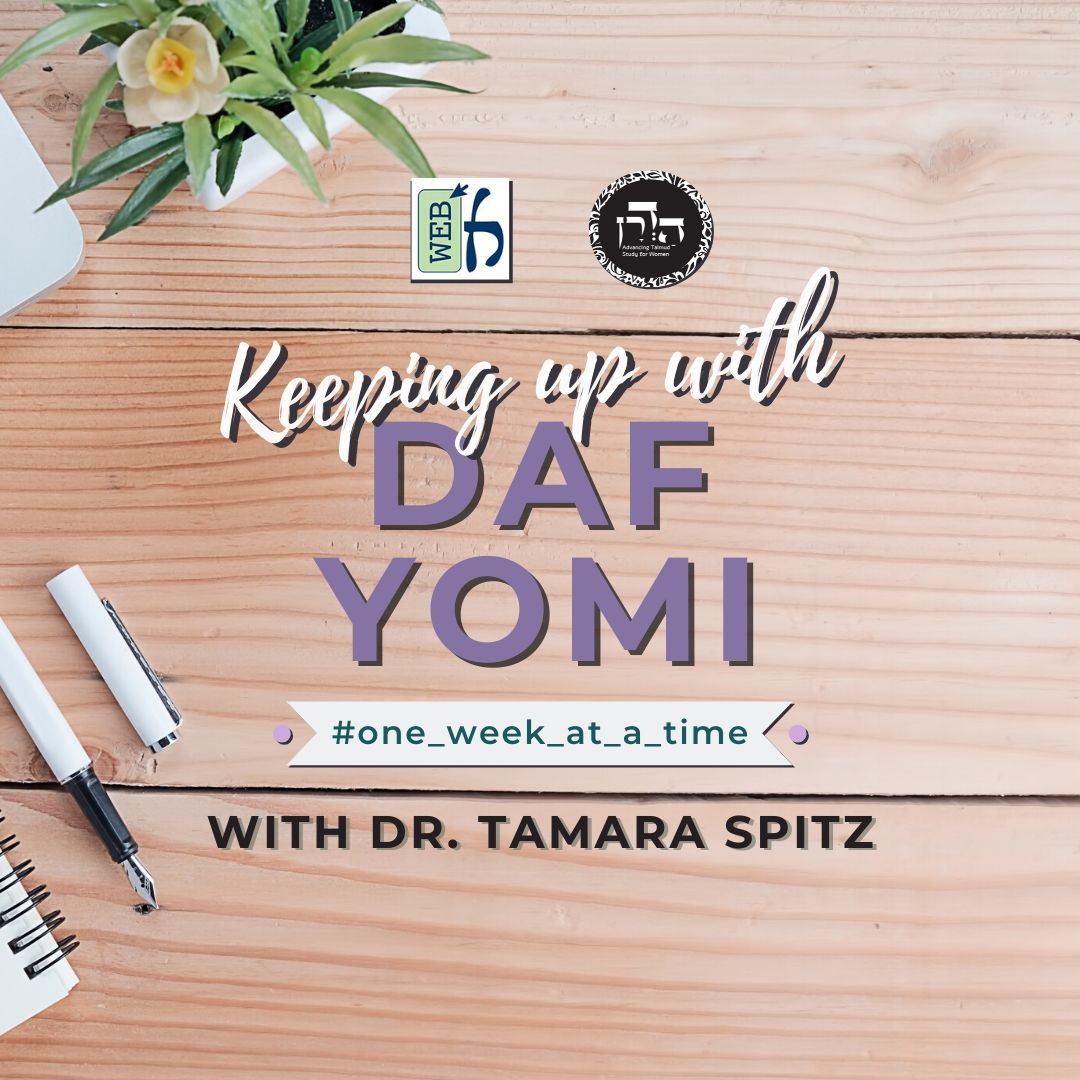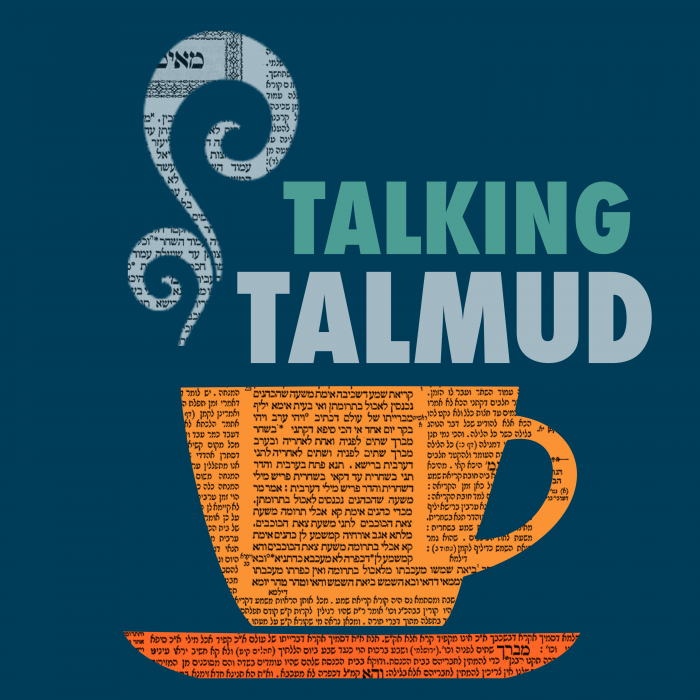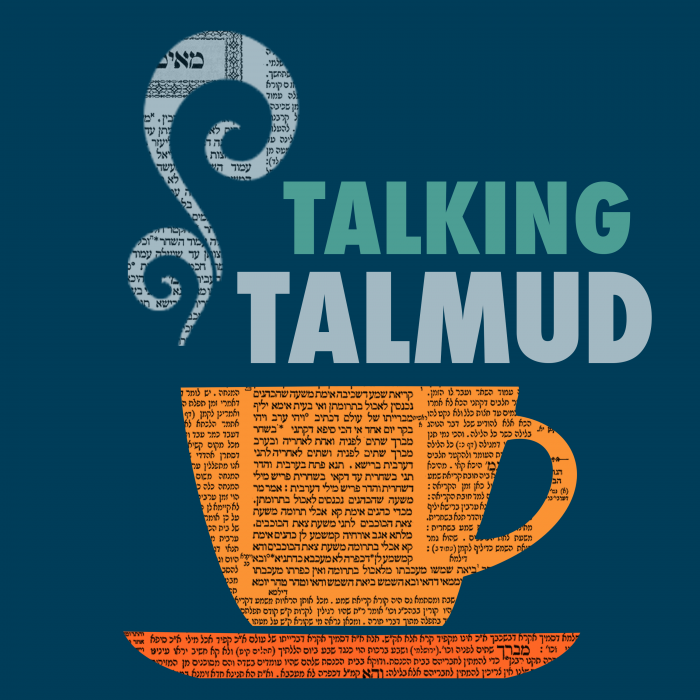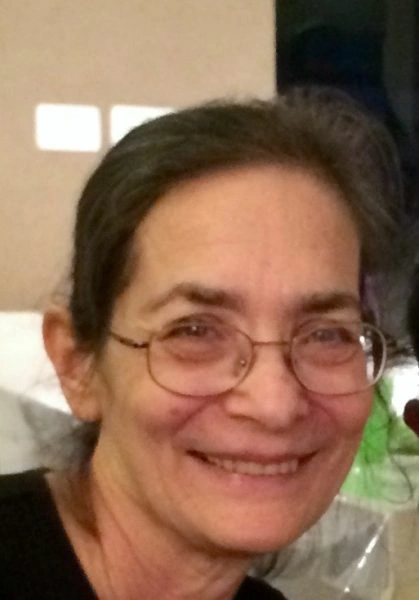Rosh Hashanah 24
גִּירֵי קָא מְשַׁדְּיָיא.
that the sun is shooting arrows at those who deny its divinity, using the rainbow as its bow. The concave side of the rainbow always faces away from the sun, so that it does not look like a bow held by the sun.
כַּמָּה הָיָה גָּבוֹהַּ, וּלְאַיִן הָיָה נוֹטֶה כּוּ׳. תָּנָא חֲדָא: לִצְפוֹנָהּ — דְּבָרָיו קַיָּימִין, לִדְרוֹמָהּ — לֹא אָמַר כְּלוּם. וְהָתַנְיָא אִיפְּכָא: לִדְרוֹמָהּ — דְּבָרָיו קַיָּימִין, לִצְפוֹנָהּ — לֹא אָמַר כְּלוּם.
§ The mishna taught that the examination of the witnesses included the following questions: How high was the moon over the horizon, and in which direction did it tilt? It was taught in one baraita: If the witness testifies that he saw the moon to the north of the sun, his statement is valid. However, if he says that he saw it to its south, he has not said anything of significance, as this is impossible. The Gemara asks: Isn’t the opposite taught in a different baraita: If he testifies that he saw the moon to the south of the sun, his statement is valid. However, if he says he saw it to its north, he has not said anything.
לָא קַשְׁיָא: כָּאן, בִּימוֹת הַחַמָּה. כָּאן, בִּימוֹת הַגְּשָׁמִים.
The Gemara answers: This is not difficult. Here, in the second baraita mentioned above, it is referring to the summer, when the moon is to the south of the sun; there, in the first baraita mentioned above, it is referring to the rainy season, when the moon is to the north of the sun.
תָּנוּ רַבָּנַן: אֶחָד אוֹמֵר גָּבוֹהַּ שְׁתֵּי מַרְדְּעוֹת, וְאֶחָד אוֹמֵר שָׁלֹשׁ — עֵדוּתָן קַיֶּימֶת. אֶחָד אוֹמֵר שָׁלֹשׁ, וְאֶחָד אוֹמֵר חָמֵשׁ — עֵדוּתָן בְּטֵילָה. אֲבָל מִצְטָרְפִין לְעֵדוּת אַחֶרֶת.
The Sages taught in a baraita: If one witness says that he saw the moon two plow handles high above the horizon, and the other one says it was three plow handles high, their testimony is valid, as a small discrepancy of this kind is reasonable. However, if one says that he saw the moon three plow handles above the horizon, and the other one says it was five plow handles high, their testimony is void, as that discrepancy is unacceptable. However, this does not mean that the witnesses themselves are disqualified, as either of them may join with another testimony, i.e., he may combine his account with that of another witness who testifies likewise.
תָּנוּ רַבָּנַן: רְאִינוּהוּ בְּמַיִם, רְאִינוּהוּ בַּעֲשָׁשִׁית, רְאִינוּהוּ בֶּעָבִים — אֵין מְעִידִין עָלָיו. חֶצְיוֹ בְּמַיִם, חֶצְיוֹ בֶּעָבִים, חֶצְיוֹ בַּעֲשָׁשִׁית — אֵין מְעִידִין עָלָיו.
The Sages taught in another baraita that if the witnesses say: We did not actually see the moon, but we saw it reflected in the water, or we saw it reflected in a glass lantern, or we saw it through thin clouds, they may not testify about it, as only a direct sighting of the moon is acceptable. If they say: We saw half of the moon’s reflection in the water, or we saw half of it through the clouds, or we saw half of it in a lantern, they still may not testify about it.
הַשְׁתָּא כּוּלּוֹ אָמְרַתְּ לָא, חֶצְיוֹ מִבַּעְיָא?! אֶלָּא הָכִי קָאָמַר: חֶצְיוֹ בְּמַיִם חֶצְיוֹ בָּרָקִיעַ, חֶצְיוֹ בֶּעָבִים חֶצְיוֹ בָּרָקִיעַ, חֶצְיוֹ בַּעֲשָׁשִׁית חֶצְיוֹ בָּרָקִיעַ — אֵין מְעִידִין.
The Gemara analyzes this baraita: Now, if when one sees the entire moon in this manner, you said that this is not valid testimony, is it necessary to teach that one may not testify when he sees only half of it? Rather, this is what the baraita is saying: If the witnesses saw half of the moon’s reflection in water and half of it directly in the sky, or half of it through the clouds and half of it in the sky, or half of it in a lantern and half of it in the sky, although they saw half of the moon directly, they may not testify about it until they see the entire moon in the sky.
תָּנוּ רַבָּנַן: רְאִינוּהוּ וְשׁוּב לֹא רְאִינוּהוּ — אֵין מְעִידִין עָלָיו. כׇּל הָכִי חָזוּ לֵהּ וְאָזְלִי?!
The Sages taught in another baraita that if the witnesses say: One moment we saw the new moon, but we did not see it again, they may not testify about it. The Gemara asks: Must they go on watching it to such an extent, i.e., why should they have to see it for a long period of time?
אָמַר אַבָּיֵי, הָכִי קָאָמַר: רְאִינוּהוּ מֵאֵלֵינוּ, וְשַׁבְנוּ לִרְאוֹתוֹ מִדַּעְתֵּנוּ, וְלֹא רְאִינוּהוּ — אֵין מְעִידִין עָלָיו, מַאי טַעְמָא — אֵימוֹר כּוֹבִיתָא דְעֵיבָא בְּעָלְמָא הוּא דְּחָזֵי.
Abaye said that this is what the baraita is saying: If the witnesses say: We saw the moon on our own accord, i.e., by chance, without looking for it, and then we returned to look for it on purpose, to deliver precise testimony about it, but we did not see it again, they may not testify about it. What is the reason? Because one can say that the first time it was merely a small round white cloud that they saw, which they mistook for the moon, and that is why when they looked for it again they could not find it.
מַתְנִי׳ רֹאשׁ בֵּית דִּין אוֹמֵר: ״מְקוּדָּשׁ״, וְכׇל הָעָם עוֹנִין אַחֲרָיו: ״מְקוּדָּשׁ מְקוּדָּשׁ״. בֵּין שֶׁנִּרְאָה בִּזְמַנּוֹ, בֵּין שֶׁלֹּא נִרְאָה בִּזְמַנּוֹ — מְקַדְּשִׁין אוֹתוֹ.
MISHNA: After the witnesses have been examined and their testimony accepted, the head of the court says: It is sanctified. And all the people respond after him: It is sanctified; it is sanctified. Whether the moon was seen at its anticipated time, on the thirtieth day of the previous month, or whether it was not seen at its anticipated time, in which case witnesses are not necessary to establish the following day as the New Moon, the court sanctifies it and formally proclaims the day as the New Moon.
רַבִּי אֶלְעָזָר בְּרַבִּי צָדוֹק אוֹמֵר: אִם לֹא נִרְאָה בִּזְמַנּוֹ — אֵין מְקַדְּשִׁין אוֹתוֹ, שֶׁכְּבָר קִידְּשׁוּהוּ שָׁמַיִם.
Rabbi Elazar, son of Rabbi Tzadok, says: If the new moon was not seen at its anticipated time, the court does not sanctify the New Moon on the following day, as the celestial court in Heaven has already sanctified it, precluding the need for the additional sanctification by the earthly court.
גְּמָ׳ רֹאשׁ בֵּית דִּין וְכוּ׳. מְנָהָנֵי מִילֵּי? אָמַר רַבִּי חִיָּיא בַּר גַּמְדָּא אָמַר רַבִּי יוֹסֵי בֶּן שָׁאוּל אָמַר רַבִּי: אָמַר קְרָא ״וַיְדַבֵּר מֹשֶׁה אֶת מוֹעֲדֵי ה׳״ — מִכָּאן שֶׁרֹאשׁ בֵּית דִּין אוֹמֵר ״מְקוּדָּשׁ״.
GEMARA: The mishna teaches that the head of the court says: It is sanctified. The Gemara asks: From where are these matters, that the court must sanctify the New Moon, derived? Rabbi Ḥiyya bar Gamda said that Rabbi Yosei ben Shaul said that Rabbi Yehuda HaNasi said that the verse states: “And Moses declared to the children of Israel the appointed seasons of the Lord” (Leviticus 23:44). From here it is derived that the head of the court says: It is sanctified, as it is evident from the verse that Moses, whose status was equivalent to that of the head of the Great Sanhedrin, declared the appointed times of the Festivals and New Moons in a formal manner.
וְכׇל הָעָם עוֹנִין אַחֲרָיו ״מְקוּדָּשׁ מְקוּדָּשׁ״. מְנָלַן? אָמַר רַב פָּפָּא: אָמַר קְרָא ״אֲשֶׁר תִּקְרְאוּ אוֹתָם״, קְרִי בֵּיהּ אַתֶּם. רַב נַחְמָן בַּר יִצְחָק אָמַר: ״אֵלֶּה הֵם מוֹעֲדֵי״, הֵם יֹאמְרוּ מוֹעֲדֵי.
§ The mishna further teaches that after the head of the court says: It is sanctified, all the people respond after him: It is sanctified; it is sanctified. The Gemara asks: From where do we derive this? Rav Pappa said that the verse states: “Which you shall proclaim them [otam] to be sacred convocations” (Leviticus 23:2). Instead of otam, read into the verse: You [atem], as though the verse stated: Which you shall proclaim, you. This superfluous word you teaches that the month must be proclaimed not only by the head of the court, but also by you, the people. Rav Naḥman bar Yitzḥak said that it is derived from the phrase: “These are [hem] My appointed seasons” (Leviticus 23:2). The term hem can also mean: They, which indicates that they, the people, should likewise say and announce My appointed seasons.
״מְקוּדָּשׁ מְקוּדָּשׁ״ תְּרֵי זִימְנֵי לְמָה לִי? דִּכְתִיב: ״מִקְרָאֵי קוֹדֶשׁ״.
The Gemara further asks: Why do I need the people to declare: It is sanctified; it is sanctified, twice? The Gemara answers that the reason is that it is written: “Sacred convocations” (Leviticus 23:2) in the plural, which indicates that they must announce it twice.
רַבִּי אֶלְעָזָר בְּרַבִּי צָדוֹק אוֹמֵר: אִם לֹא נִרְאָה בִּזְמַנּוֹ — אֵין מְקַדְּשִׁין אוֹתוֹ. תַּנְיָא, פְּלֵימוֹ אוֹמֵר: בִּזְמַנּוֹ — אֵין מְקַדְּשִׁין אוֹתוֹ, שֶׁלֹּא בִּזְמַנּוֹ — מְקַדְּשִׁין אוֹתוֹ.
§ The mishna taught that Rabbi Elazar, son of Rabbi Tzadok, says: If the new moon was not seen at its anticipated time, the court does not sanctify the New Moon on the following day. The Gemara cites other opinions in this regard: It is taught in a baraita that the Sage Palaimo says: If the new moon was seen at its anticipated time, the court does not sanctify the New Moon, as the new moon appeared as expected and there is no need for any special sanctification. However, if the new moon was seen not at its anticipated time, the court must sanctify the New Moon.
רַבִּי אֶלְעָזָר בְּרַבִּי שִׁמְעוֹן אוֹמֵר: בֵּין כָּךְ וּבֵין כָּךְ אֵין מְקַדְּשִׁין אוֹתוֹ, שֶׁנֶּאֱמַר: ״וְקִדַּשְׁתֶּם אֵת שְׁנַת הַחֲמִשִּׁים״ — שָׁנִים אַתָּה מְקַדֵּשׁ, וְאִי אַתָּה מְקַדֵּשׁ חֳדָשִׁים. אָמַר רַב יְהוּדָה אָמַר שְׁמוּאֵל: הֲלָכָה כְּרַבִּי אֶלְעָזָר בְּרַבִּי צָדוֹק.
The baraita continues: Rabbi Elazar, son of Rabbi Shimon, says: In either case, the court does not sanctify the New Moon formally, as it is stated: “And you shall sanctify the fiftieth year” (Leviticus 25:10), from which it is derived: You must formally sanctify years in court, but you do not have to formally sanctify months, as they are sanctified automatically by Heaven. Rather, it is enough merely to announce to the public that a certain day was established as the New Moon. Rabbi Yehuda said that Shmuel said: The halakha is in accordance with the opinion of Rabbi Elazar, son of Rabbi Tzadok, that if the new moon was seen at its anticipated time, the court sanctifies the new month; however, if it was not seen at its anticipated time, they do not sanctify it.
אָמַר אַבָּיֵי, אַף אֲנַן נָמֵי תְּנֵינָא: רָאוּהוּ בֵּית דִּין וְכׇל יִשְׂרָאֵל, נֶחְקְרוּ הָעֵדִים וְלֹא הִסְפִּיקוּ לוֹמַר ״מְקוּדָּשׁ״ עַד שֶׁחָשֵׁיכָה — הֲרֵי זֶה מְעוּבָּר. מְעוּבָּר — אִין, מְקוּדָּשׁ — לָא.
Abaye said: We, too, learn in a mishna: If the court and all of the Jewish people saw the new moon, and the witnesses were interrogated, but the court did not manage to say: Sanctified, before nightfall, the previous month is rendered a full, thirty-day month. This indicates that full, yes; i.e., in this case, it is necessary to extend the previous month. However, sanctified, no; there is no need to formally sanctify the month, as the New Moon does not occur on its anticipated date in this case.
מְעוּבָּר אִיצְטְרִיכָא לֵיהּ, סָלְקָא דַּעְתָּךְ אָמֵינָא: הוֹאִיל וְרָאוּהוּ בֵּית דִּין וְכׇל יִשְׂרָאֵל, אִיפַּרְסְמָא וְלָא לִיעְבְּרוּהּ, קָא מַשְׁמַע לַן.
The Gemara rejects this argument: There is no proof from here, as it was necessary for the mishna to mention that the month is rendered a full, thirty-day month. The reason is that it might enter your mind to say that since the court and the entire Jewish people saw the new moon, it has become public knowledge and therefore there is no need to render the previous month a full, thirty-day month. Consequently, the mishna teaches us that even in this case the previous month must be extended. Nevertheless, it is still possible that the New Moon must be formally sanctified on the following day.
מַתְנִי׳ דְּמוּת צוּרוֹת לְבָנָה הָיוּ לוֹ לְרַבָּן גַּמְלִיאֵל בְּטַבְלָא וּבְכוֹתֶל בַּעֲלִיָּיתוֹ, שֶׁבָּהֶן מַרְאֶה אֶת הַהֶדְיוֹטוֹת, וְאוֹמֵר: הֲכָזֶה רָאִיתָ אוֹ כָּזֶה.
MISHNA: Rabban Gamliel had a diagram of the different forms of the moon drawn on a tablet that hung on the wall of his attic, which he would show to the laymen who came to testify about the new moon but were unable to describe adequately what they had seen. And he would say to them: Did you see a form like this or like this?
גְּמָ׳ וּמִי שְׁרֵי? וְהָכְתִיב: ״לֹא תַעֲשׂוּן אִתִּי״ — לֹא תַּעֲשׂוּן כִּדְמוּת שַׁמָּשַׁיי.
GEMARA: The Gemara asks: And is it permitted to create these types of forms? Isn’t it written: “You shall not make with Me gods of silver, or gods of gold” (Exodus 20:20), which is interpreted as teaching: You shall not make images of My attendants, i.e., those celestial bodies that were created to serve God, including the sun and the moon?
אָמַר אַבָּיֵי: לָא אָסְרָה תּוֹרָה אֶלָּא שַׁמָּשִׁין שֶׁאֶפְשָׁר לַעֲשׂוֹת כְּמוֹתָן, כִּדְתַנְיָא: לֹא יַעֲשֶׂה אָדָם בַּיִת תַּבְנִית הֵיכָל, אַכְסַדְרָה תַּבְנִית אוּלָם, חָצֵר כְּנֶגֶד עֲזָרָה, שֻׁלְחָן כְּנֶגֶד שֻׁלְחָן, מְנוֹרָה כְּנֶגֶד מְנוֹרָה. אֲבָל עוֹשֶׂה
§ Abaye said: The Torah prohibited only the images of those attendants with regard to which it is possible to reproduce an item in their likeness. Since it is impossible for anyone to reproduce the sun and the moon, the prohibition does not apply to these objects. As it is taught in a baraita: A person may not construct a house in the exact form of the Sanctuary, nor a portico in the exact form of the Entrance Hall of the Sanctuary, nor a courtyard corresponding to the Temple courtyard, nor a table corresponding to the table in the Temple, nor a candelabrum corresponding to the candelabrum in the Temple. However, one may fashion
שֶׁל חֲמִשָּׁה וְשֶׁל שִׁשָּׁה וְשֶׁל שְׁמוֹנָה. וְשֶׁל שִׁבְעָה — לֹא יַעֲשֶׂה, אֲפִילּוּ שֶׁל שְׁאָר מִינֵי מַתָּכוֹת. רַבִּי יוֹסֵי בַּר יְהוּדָה אוֹמֵר: אַף שֶׁל עֵץ לֹא יַעֲשֶׂה, כְּדֶרֶךְ שֶׁעָשׂוּ מַלְכֵי בֵּית חַשְׁמוֹנַאי.
a candelabrum of five or of six or of eight lamps. But one may not fashion a candelabrum with seven lamps even if he constructs it from other kinds of metal rather than gold, as in exigent circumstances the candelabrum in the Temple may be fashioned from other metals. Rabbi Yosei bar Yehuda says: Also, one may not fashion a candelabrum of wood, in the manner that the kings of the Hasmonean monarchy fashioned it. When they first purified the Temple they had to prepare the candelabrum out of wood, as no other material was available. Since this candelabrum is fit for the Temple, it is prohibited to fashion one of this kind for oneself.
אָמְרוּ לוֹ: מִשָּׁם רְאָיָיה?! שַׁפּוּדִין שֶׁל בַּרְזֶל הָיוּ וְחִיפּוּם בְּבַעַץ. הֶעֱשִׁירוּ — עֲשָׂאוּם שֶׁל כֶּסֶף, חָזְרוּ הֶעֱשִׁירוּ — עֲשָׂאוּם שֶׁל זָהָב.
The other Sages said to Rabbi Yosei bar Yehuda: From there you seek to bring a proof? There the branches of the candelabrum were comprised of spits [shippudin] of iron and they covered them with tin. Later, when they grew richer and could afford a candelabrum of higher-quality material, they fashioned them from silver. When they grew even richer, they fashioned them from gold. Still, Abaye proves from this baraita that the prohibition against forming an image applies only to items that can be reconstructed in an accurate manner. Since this is not possible in the case of the moon, Rabban Gamliel’s forms were permitted.
וְשַׁמָּשִׁין שֶׁאִי אֶפְשָׁר לַעֲשׂוֹת כְּמוֹתָן מִי שְׁרֵי? וְהָתַנְיָא: ״לֹא תַעֲשׂוּן אִתִּי״ — לֹא תַּעֲשׂוּן כִּדְמוּת שַׁמָּשַׁיי הַמְשַׁמְּשִׁין לְפָנַי בַּמָּרוֹם! אָמַר אַבָּיֵי: לֹא אָסְרָה תּוֹרָה אֶלָּא דְּמוּת אַרְבָּעָה פָּנִים בַּהֲדֵי הֲדָדֵי.
The Gemara asks: And is it really permitted to form images of those attendants concerning which it is impossible to reproduce their likeness? Isn’t it taught in a baraita that the verse: “You shall not make with Me gods of silver” (Exodus 20:19), comes to teach: You shall not make images of My attendants that serve before Me on high. Apparently, this includes the sun and the moon. Abaye said: This does not include the sun and the moon, as the Torah prohibited only the fashioning of an image of all four faces of the creatures of the Heavenly Chariot together (see Ezekiel, chapter 1). However, all other images, which are not the likeness of the ministering angels, are permitted.
אֶלָּא מֵעַתָּה פַּרְצוּף אָדָם לְחוֹדֵיהּ תִּשְׁתְּרֵי? אַלְּמָה תַּנְיָא: כׇּל הַפַּרְצוּפוֹת מוּתָּרִין חוּץ מִפַּרְצוּף אָדָם! אָמַר רַב הוּנָא בְּרֵיהּ דְּרַב אִידִי: מִפִּרְקֵיהּ דְּאַבָּיֵי שְׁמִיעָא לִי: ״לֹא תַעֲשׂוּן אִתִּי״ — לֹא תַּעֲשׂוּן אוֹתִי.
The Gemara raises a difficulty: However, if that is so, let the fashioning of an image of a human face [partzuf ] alone be permitted. Why, then, is it taught in a baraita: All faces are permitted for ornamental purposes, except for the face of a person? Rav Huna, son of Rav Idi, said: From a lecture of Abaye I heard that there is a different reason why one may not form an image of a human face, as the verse states: “You shall not make with Me [iti]” (Exodus 20:19). This can be read as: You shall not make Me [oti]. Since man is created in the image of God, it is prohibited to form an image of a human being.
וּשְׁאָר שַׁמָּשִׁין מִי שְׁרֵי? וְהָא תַּנְיָא ״לֹא תַעֲשׂוּן אִתִּי״ — לֹא תַּעֲשׂוּן כִּדְמוּת שַׁמָּשַׁיי הַמְּשַׁמְּשִׁין לְפָנַי בַּמָּרוֹם, כְּגוֹן אוֹפַנִּים וּשְׂרָפִים וְחַיּוֹת הַקּוֹדֶשׁ וּמַלְאֲכֵי הַשָּׁרֵת! אָמַר אַבָּיֵי: לֹא אָסְרָה תּוֹרָה אֶלָּא שַׁמָּשִׁין שֶׁבַּמָּדוֹר הָעֶלְיוֹן.
The Gemara asks: And is it permitted to form images of other attendants? Isn’t it taught in another baraita that the verse: “You shall not make with Me gods of silver” (Exodus 20:19), teaches that you shall not make images of My attendants that serve before Me on high, for example, ofanim and seraphim and the sacred ḥayyot and the ministering angels. Abaye said: The Torah prohibited only those attendants that are found in the upper Heaven, i.e., the supreme angels in the highest firmament, but not the celestial bodies, e.g., the sun and the moon, despite the fact that they too are located in heaven.
וְשֶׁבַּמָּדוֹר הַתַּחְתּוֹן מִי שְׁרֵי? וְהָתַנְיָא: ״אֲשֶׁר בַּשָּׁמַיִם״ — לְרַבּוֹת חַמָּה וּלְבָנָה כּוֹכָבִים וּמַזָּלוֹת, ״מִמַּעַל״ — לְרַבּוֹת מַלְאֲכֵי הַשָּׁרֵת! כִּי תַּנְיָא הָהִיא — לְעׇבְדָם.
The Gemara raises another difficulty: And is it permitted to form images of those bodies found in the lower heaven? Isn’t it taught in a baraita: “You shall not make for yourself any graven image, nor any manner of likeness, of anything that is in heaven above, or that is in the earth beneath, or that is in the water under the earth” (Exodus 20:3). The phrase “that is in heaven” comes to include the sun, the moon, the stars, and the constellations. The term “above” serves to include the ministering angels. Apparently, it is prohibited to form an image even of the celestial bodies found in the lower Heaven. The Gemara answers: When that baraita is taught, it is in reference to the prohibition against worshipping them. However, there is no prohibition against forming an image in their likeness.
אִי לְעׇבְדָם, אֲפִילּוּ שִׁלְשׁוּל קָטָן נָמֵי! אִין הָכִי נָמֵי, דְּתַנְיָא: ״אֲשֶׁר בָּאָרֶץ״ — לְרַבּוֹת הָרִים וּגְבָעוֹת יַמִּים וּנְהָרוֹת אֲפִיקִים וְגֵאָיוֹת, ״מִתַּחַת״ — לְרַבּוֹת שִׁלְשׁוּל קָטָן.
The Gemara asks: If that baraita is referring to the prohibition against worshipping them, then even a tiny worm should also be prohibited. The Gemara answers: Yes, it is indeed so, as it is taught in the same baraita with regard to the continuation of the verse, “in the earth” comes to include mountains and hills, seas and rivers, streams and valleys; “beneath” comes to include a tiny worm. If so, it is indeed possible to explain that the entire baraita is referring to the prohibition against idol worship.
וַעֲשִׂיָּיה גְּרֵידְתָּא מִי שְׁרֵי? וְהָתַנְיָא: ״לֹא תַעֲשׂוּן אִתִּי״ — לֹא תַּעֲשׂוּן כִּדְמוּת שַׁמָּשַׁיי הַמְשַׁמְּשִׁין לְפָנַי, כְּגוֹן חַמָּה וּלְבָנָה כּוֹכָבִים וּמַזָּלוֹת.
The Gemara raises yet another objection: And is the mere fashioning of images of the celestial bodies permitted? Isn’t it taught in another baraita: “You shall not make with Me gods of silver” (Exodus 20:19). This verse teaches that you shall not make images of My attendants that serve before Me, for example the sun, the moon, the stars and the constellations. This is explicit proof that it is prohibited to form images of the sun and the moon; consequently, the solution proposed by Abaye is rejected, leaving the difficulty with Rabban Gamliel’s diagram unresolved.
שָׁאנֵי רַבָּן גַּמְלִיאֵל, דַּאֲחֵרִים עָשׂוּ לוֹ. וְהָא רַב יְהוּדָה, דַּאֲחֵרִים עָשׂוּ לוֹ, וַאֲמַר לֵיהּ שְׁמוּאֵל לְרַב יְהוּדָה: שִׁינָּנָא, סַמִּי עֵינֵיהּ דְּדֵין!
The Gemara proposes an alternative resolution: The case of Rabban Gamliel is different, as others, i.e., gentiles, fashioned those images for him, and it is prohibited only for a Jew to fashion such images; there is no prohibition against having them in one’s possession. The Gemara raises a difficulty: But there is the case of Rav Yehuda, as others fashioned for him a seal in the form of a human being, and Shmuel said to Rav Yehuda, who was his student: Sharp-witted one, blind this one’s eyes, i.e., disfigure the image, as it is prohibited even to have the image of a human being in one’s possession.
הָתָם, חוֹתָמוֹ בּוֹלֵט הֲוָה, וּמִשּׁוּם חֲשָׁדָא. כִּדְתַנְיָא: טַבַּעַת, חוֹתָמוֹ בּוֹלֵט — אָסוּר לְהַנִּיחָהּ וּמוּתָּר לַחְתּוֹם בָּהּ. חוֹתָמוֹ שׁוֹקֵעַ — מוּתָּר לְהַנִּיחָהּ וְאָסוּר לַחְתּוֹם בָּהּ.
The Gemara answers: There, in the case of Rav Yehuda, his was a protruding seal, i.e., the image projected from the ring, and Shmuel prohibited it due to the potential suspicion that he had an object of idol worship in his hand. As it is taught in a baraita: With regard to a ring, if its seal protrudes it is prohibited to place it on one’s finger, due to the suspicion of idol worship, but it is permitted to seal objects with it. In this case, the act of sealing creates an image that is sunken below the surface, which is not prohibited. However, if its seal is sunken, it is permitted to place it on one’s finger, but it is prohibited to seal objects with it, as that creates a protruding image.
וּמִי חָיְישִׁינַן לַחֲשָׁדָא? וְהָא הָהִיא בֵּי כְנִישְׁתָּא דְּשַׁף וִיתֵיב בִּנְהַרְדְּעָא, דַּהֲוָה בֵּיהּ אִנְדְּרָטָא, וַהֲווֹ עָיְילִי רַב וּשְׁמוּאֵל וַאֲבוּהּ דִּשְׁמוּאֵל וְלֵוִי וּמְצַלּוּ הָתָם, וְלָא חָיְישִׁי לַחֲשָׁדָא! רַבִּים שָׁאנֵי.
The Gemara asks: And are we concerned about arousing suspicion in a case of this kind? But what about that certain synagogue that had been destroyed in Eretz Yisrael and its stones were relocated and it was rebuilt so that it sat in Neharde’a, and there was a statue [andarta] of the king in it. And nevertheless Rav and Shmuel and Shmuel’s father and Levi would all enter and pray there and they were not concerned about arousing suspicion. The Gemara answers: When many Jews are present it is different, as a large group is not suspected of having idolatrous intentions. Rather, it is assumed that the statue is there exclusively for purposes of ornamentation.
וְהָא רַבָּן גַּמְלִיאֵל יָחִיד הוּא? כֵּיוָן דְּנָשִׂיא הוּא — שְׁכִיחִי רַבִּים גַּבֵּיהּ. אִיבָּעֵית אֵימָא: דִּפְרָקִים הֲוָה.
The Gemara asks: But isn’t Rabban Gamliel an individual? According to this reasoning, his images of the moon should have been prohibited, as they would have aroused suspicion. The Gemara answers: Since he is the Nasi, the head of the Great Sanhedrin, many people were always found with him, and therefore there was no room for suspicion. The Gemara suggests an alternative answer: If you wish, say that these images were not whole; rather, they were formed from pieces of images that had to be put together. Only complete images are prohibited.
וְאִיבָּעֵית אֵימָא: לְהִתְלַמֵּד עֲבַד, וּכְתִיב: ״לֹא תִּלְמַד לַעֲשׂוֹת״ — אֲבָל אַתָּה לָמֵד לְהָבִין וּלְהוֹרוֹת.
The Gemara suggests yet another answer: If you wish, say: Rabban Gamliel did this to teach himself, which is not prohibited, as it is written: “You shall not learn to do after the abominations of those nations” (Deuteronomy 18:9), which indicates: However, you may learn to understand and to teach. In other words, it is permitted to do certain things for the sake of Torah study which would otherwise be prohibited.
מַתְנִי׳ מַעֲשֶׂה שֶׁבָּאוּ שְׁנַיִם וְאָמְרוּ: רְאִינוּהוּ שַׁחֲרִית בַּמִּזְרָח,
MISHNA: There was an incident in which two witnesses came to testify about the new moon, and they said: We saw the waning moon in the morning in the east,







